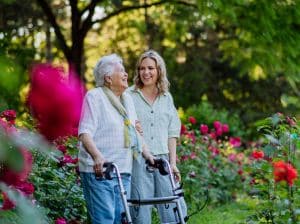
Reaching retirement opens up a world of opportunities for travel. With more free time on your hands, exploring new destinations and cultures can become a reality. However, to truly enjoy your newfound freedom, a strategic approach towards insurance is essential to avoid unnecessary expenses.
Here’s how retirees can save on insurance whilst traversing the globe, with particular insights into crucial considerations like over 80 car insurance.
Assessing Your Travel Insurance Needs
Travel insurance is a must-have for retirees planning to explore the world. It can cover medical emergencies, trip cancellations, and lost luggage, which can otherwise result in hefty costs. The first step in saving money on travel insurance is to understand what your specific needs are. Consider factors such as your health conditions, the duration of your trips, and the type of activities you plan on undertaking. This will help ensure that you’re not over-paying for coverage you don’t need.
Compare different insurance plans and providers, and focus on those that tailor their offerings to older travelers. These plans are often designed to address common concerns faced by retirees, like pre-existing medical conditions. Many companies offer discounts for purchasing annual multi-trip policies if you plan on taking several trips throughout the year.
Leveraging Existing Insurance Policies
Before purchasing additional coverage, check your existing insurance policies. Sometimes, home insurance policies come with travel perks, which may extend to cover certain aspects of your trip. Additionally, credit cards often offer basic travel insurance when you book trips through them. These existing policies can be a great way to save money, as they might cover minor travel inconveniences, and all you may need is supplemental insurance for more significant concerns.
For those who continue to drive in retirement, understanding your car insurance needs is crucial. For retirees who require over 80 car insurance, approaching the right insurers can save you substantial sums. Providers specializing in insurance for older drivers often offer competitive rates that consider the unique requirements of retirees. Moreover, maintaining good driving practices can help keep these premiums in check.
Timing Can Make a Difference
Timing your insurance purchase can also impact how much you pay. Travel insurance providers may offer early-bird discounts if you buy your policy well in advance of your departure date. Additionally, purchasing at certain times of the year may result in savings. For instance, some companies run campaigns during travel expos or peak holiday booking seasons, offering special deals.
It is equally important to factor in the timing of your travels. Travelling during off-peak seasons can reduce not only your travel expenses but potentially your insurance premiums, as insurers sometimes offer lower rates when fewer claims are expected.
Embrace Technology
The rise of technology has significantly transformed how we approach travel and insurance. Use online comparison platforms to view a range of insurance options that cater to your needs and budget. These platforms simplify the process of comparing quotes and features, helping you find the best deal.
Furthermore, smartphone apps are available that provide real-time notifications of travel updates or insurance alerts, which can be beneficial while travelling. It’s a smart way to manage your insurance policies with ease, ensuring you are always informed and prepared.
Consideration of Health and Safety
Taking preventive measures regarding your health can have a positive impact on your insurance costs. Many retirees find that maintaining a healthy lifestyle not only enhances their travel experiences but can also result in more favorable insurance premiums. Regular check-ups and being transparent about health conditions with your insurer can avoid disputes and ensure you are adequately covered.
Additionally, attending to safety while on the road is pivotal. Many insurance providers offer incentives for individuals who demonstrate cautious behavior, such as discounts for attending defensive driving courses.
Exploring Alternative Options
Lastly, consider alternative insurance options, such as joining organizations or clubs that offer group insurance benefits to members. Associations tailored to retirees often provide travel insurance as part of their membership, which can be more affordable than standalone policies.
Conclusion
Traveling in retirement is a rewarding way to enjoy the fruits of your labor and embrace new experiences. By carefully navigating the world of insurance, you can make the most of your adventures without breaking the bank. From finding the right travel insurance to understanding the nuances of car insurance for older drivers, these strategies empower you to explore the world with peace of mind and financial security. Bon voyage!








